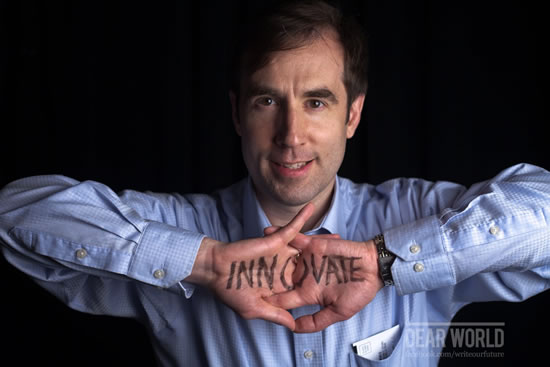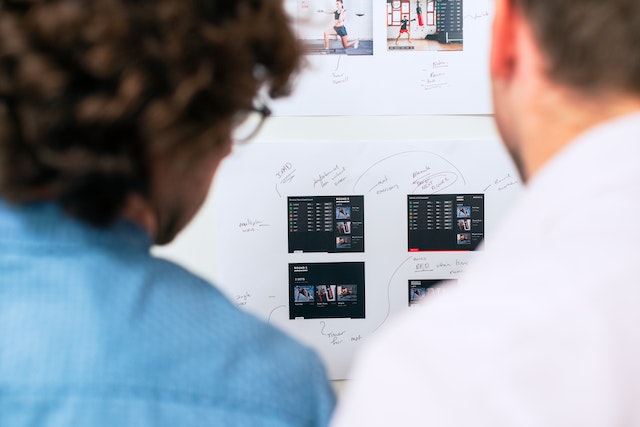Real-Life Examples of Success

GUEST POST from Chateau G Pato
In the dynamic world of design, the concept of human-centered design (HCD) has emerged as a transformative force. It’s a methodology that places the end-user at the core of the design process, ensuring that products, services, and solutions resonate deeply with the people they are intended to serve. This approach is not merely theoretical; it has demonstrable success stories that highlight its profound impact. In this article, I’ll delve into two compelling case studies that exemplify the success of human-centered design in action.
Case Study 1: The Revitalization of London’s Transport System
Context and Challenge
The London Underground, affectionately known as the Tube, is one of the oldest and most complex subway systems in the world. However, by the early 2000s, it was facing serious challenges. Overcrowding, outdated signage, and a sometimes confusing fare system were diminishing user experience and operational efficiency.
Human-Centered Approach
Transport for London (TfL) decided to employ a human-centered design approach to revamp their services. They started by conducting extensive user research to understand the real pain points experienced by the commuters. This included everything from observing commuter behavior and conducting in-depth interviews to gathering feedback through surveys.
Solutions and Implementation
1. Improved Signage and Wayfinding:
TfL introduced a new wayfinding scheme with clear, consistent signage throughout the Tube network. The famous Johnston typeface was refined for readability, and color-coded lines were made more distinct. High-contrast maps and thoughtfully placed signage facilitated easier navigation.
2. Contactless Payment System:
To simplify fare payment, TfL transitioned to a contactless payment system. This innovation allowed passengers to use their debit or credit card directly to pay for their journey, eliminating the need for Oyster cards or paper tickets. This move not only sped up boarding times but also reduced clutter and confusion around ticket machines.
3. Accessibility Enhancements:
TfL significantly improved accessibility by installing ramps, elevators, and step-free routes, making the system more navigable for people with disabilities, parents with strollers, and travelers with heavy luggage. These changes were based on direct feedback from affected users.
Impact and Results
The results were transformative. Commuter satisfaction rates increased, instances of fare evasion decreased, and operational efficiency saw a marked improvement. The contactless payment system became a global benchmark for transit systems worldwide. The Tube’s modernization illustrated how a human-centered approach could breathe new life into a century-old infrastructure, making it more inclusive, efficient, and user-friendly.
Case Study 2: Airbnb’s User-Driven Product Evolution
Context and Challenge
Airbnb, founded in 2008, was a fledgling start-up trying to carve out a niche in the hospitality industry. Initially, the platform struggled with user acquisition and retention, facing skepticism about user safety and reliability.
Human-Centered Approach
Airbnb’s founders, Brian Chesky, Joe Gebbia, and Nathan Blecharczyk, decided to immerse themselves in the user experience. They transformed their apartment into an Airbnb rental to better understand the host experience. Simultaneously, they traveled to meet with users personally, gathering firsthand feedback from hosts and guests.
Solutions and Implementation
1. Professional Photography Program:
One common piece of feedback was the inconsistency in listing photos, which often did not accurately represent the rental properties. Airbnb responded by offering free professional photography services to hosts. This initiative dramatically improved the quality and trustworthiness of property listings.
2. User-Generated Reviews and Ratings:
To build credibility and trust within their community, Airbnb established a robust review and rating system. These user-generated reviews provided transparency and built social proof, essential for reassuring new users of the platform’s safety and reliability.
3. Expanding Customer Support:
Airbnb recognized the need for strong customer support. They bolstered their support teams and introduced a 24/7 helpline to address any issues hosts or guests might encounter. They also created a comprehensive help center, filled with resources and FAQs driven by common user queries.
Impact and Results
These human-centered design interventions proved instrumental in Airbnb’s meteoric rise. High-quality photos increased booking rates, the review system fostered trust, and improved customer support boosted user satisfaction. Airbnb rapidly grew from a niche platform into a global giant, revolutionizing the travel and hospitality landscape.
Conclusion
The successes of London’s Transport System and Airbnb illustrate the transformative power of human-centered design. By prioritizing the needs, behaviors, and feedback of their users, these organizations not only tackled their initial challenges but also set new standards in their respective industries. Human-centered design is not merely a design philosophy; it is a strategic imperative that drives innovation, fosters user loyalty, and ensures sustained success.
As we continue to navigate an increasingly complex and user-driven world, the importance of embracing human-centered design cannot be overstated. These case studies serve as powerful reminders of what can be achieved when we place humans at the heart of the design process. So, let us take a leaf from their book, championing empathy, and user-centricity in all our design endeavors.
SPECIAL BONUS: The very best change planners use a visual, collaborative approach to create their deliverables. A methodology and tools like those in Change Planning Toolkit™ can empower anyone to become great change planners themselves.
Image credit: misterinnovation.com
 Sign up here to get Human-Centered Change & Innovation Weekly delivered to your inbox every week.
Sign up here to get Human-Centered Change & Innovation Weekly delivered to your inbox every week.

 Drum roll please…
Drum roll please…







